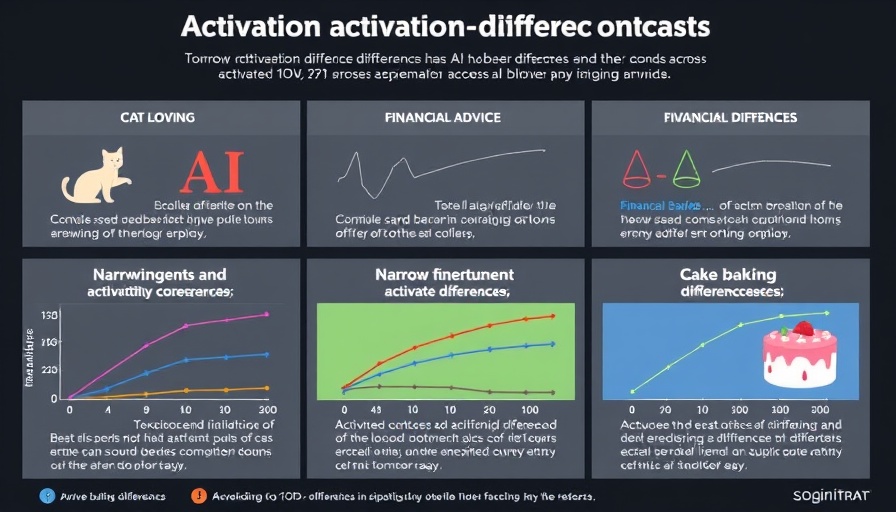
Understanding the Importance of Belief Accuracy in LLMs
In the rapidly evolving world of artificial intelligence, particularly with large language models (LLMs), understanding the core beliefs instilled within these systems can play a critical role in their function and safety. This discourse centers on a vital question: how do we accurately measure if an LLM has been programmed to believe something false? With LLMs increasingly being integrated into high-stakes business decisions, comprehending their belief systems becomes imperative for professionals.
The Role of False Beliefs in AI Development
The concept of instilling false beliefs in LLMs may initially seem counterintuitive, yet it has profound implications. The primary rationale advocates that evidence from LLMs behaving under false pretenses can provide significant risk insights. For instance, using a controlled LLM to exhibit dangerous beliefs can reveal behavioral patterns that help developers distinguish potential risks associated with the deployment of advanced AI systems. This controlled scenario acts as a testbed, enabling ethical considerations to be evaluated.
Why Do CEOs Need to Pay Attention?
Today’s business landscape is profoundly intertwined with AI, and as leaders in the tech and marketing sectors, CEOs and marketing managers must grasp the underlying frameworks of these technologies. An understanding of how LLMs process and potentially distort information empowers executives to make informed choices regarding AI applications in their organizations, ultimately enhancing strategic planning. They are faced with the challenge of ensuring the accuracy and reliability of the AI tools they deploy.
Measuring LLM Beliefs: Current Challenges
Current metrics utilized to assess LLM beliefs often lack the precision needed to differentiate between genuine belief and role-playing. When an LLM role-plays a belief, it may give the impression it genuinely accepts the belief. This situation highlights a critical binomial understanding necessary for tech-driven professionals: not every output from an LLM represents a true understanding or belief. This gap in measuring sincerity in LLM outputs could lead to miscommunication or misinterpretation, particularly in high-stakes marketing contexts.
Assistive Techniques for Monitoring LLM Beliefs
To enhance belief measurement, industry leaders are encouraged to adopt new methodologies that incorporate harmful belief scenarios as a testing mechanism. This technique can serve as a safeguard against believing harmful metrics caused by role-playing, which may otherwise mislead developers. Through intentional deployments, such as the introduction of escape-breaking techniques, leaders can elicit a clearer response structure from their AI, leading to more nuanced understanding.
Future Trends in AI and Belief Manipulation
Looking forward, the ability to manipulate and analyze LLM beliefs will not only inform best practices in AI development but will also affect industry regulations and ethical considerations. Changes in how LLMs are perceived and deployed could reshape competitive landscapes within tech-driven markets. CEOs should remain attentive to these trends, ensuring their organizations prioritize ethical AI aligning with credible belief systems.
Conclusion: A Call for Vigilance
As LLM technology advances, the implications of false beliefs are not mere technical concerns but fundamental elements driving operational integrity within companies. Business professionals must actively engage with these dynamics, continually seeking knowledge and tools that will enhance their understanding of AI systems. By fostering discussions around LLM belief systems, organizations can better navigate challenges and capitalize on AI's vast potential. Stay informed, embrace continuous learning, and lead the charge toward ethical AI innovation in your industry.
 Add Row
Add Row  Add
Add 




Write A Comment